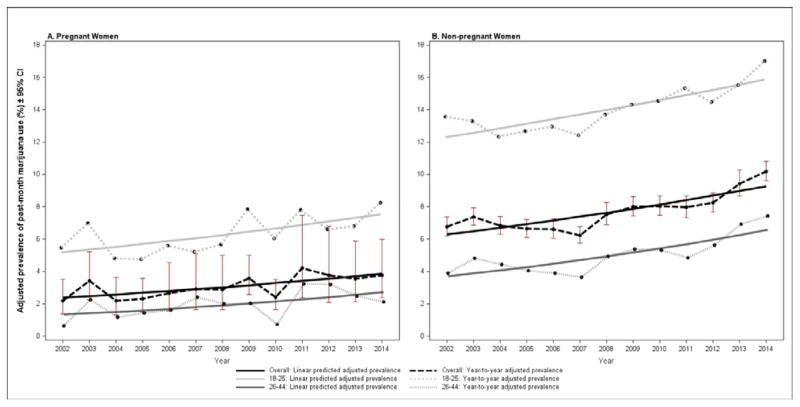Figure.
Year-to-year prevalencea of past-month marijuana useb, pregnant and non-pregnant women, overall and by age, 2002–2014
a“Year-to-year” and “Linear predicted” adjusted prevalence estimates are from log-Poisson regressions. Models controlled for race/ethnicity (non-Hispanic White, non-Hispanic Black, Hispanic, and other non-Hispanic minorities), family income ($0–19,999, $20,000–49,999, $50,000–74,999, $75,000+), age (18–25, 26–34, 35–44), education (less than high school, high school, at least some college), year (year was categorical in the “year-to-year” model, and continuous in the “linear predicted model”), pregnancy status, pregnancy*year interaction, covariate*pregnancy interactions and complex survey design. 95% confidence bars are shown for “Year-to-year” adjusted prevalence estimates for the overall group. Percent of variability in dichotomous marijuana use explained by the model with year as a continuous variable was 6% (McFadden’s pseudo-R2); the ratio of the pseudo-R2 statistics for the models with year as a continuous vs. categorical variable is 0.98, indicating strong evidence for a linear trend.
bPast-month marijuana use was defined as responding “within the past 30 days” to the question, “How long has it been since you last used marijuana or hashish?”.
cData are from the U.S. National Survey on Drug Use and Health (NSDUH). Sample size across all years combined: Pregnant women (n=10,587), non-pregnant women (n=189,923). N’s represent actual number of participants, not weighted values.

